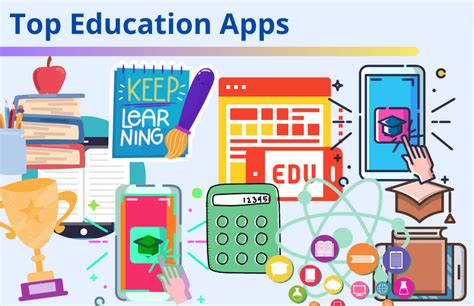

6 Steps to Create an Educational App for Free in 2025
Introduction

In today’s digital age, educational apps have become indispensable tools for students and educators alike. These apps provide interactive and engaging learning experiences, making education more accessible and enjoyable. However, developing an educational app can be a daunting task, especially for those with limited resources. This guide will provide you with a step-by-step process on how to make an educational app for free in 2025.
Step 1: Identify Your Target Audience
The first step in creating an educational app is to identify your target audience. Consider the age group, educational level, and learning styles of your intended users. This will help you tailor your app’s content and design accordingly.
Step 2: Choose a Development Platform
Next, you need to choose a development platform for your app. There are several free and open-source platforms available, such as Google’s Flutter and MIT’s App Inventor. These platforms provide easy-to-use tools and templates that make app development accessible to beginners.
Step 3: Design Your App
The design of your app is crucial for user engagement. Focus on creating an intuitive and visually appealing interface. Use clear menus, concise text, and engaging graphics to guide users through the app. Consider incorporating interactive elements such as quizzes, games, and simulations to enhance the learning experience.
Step 4: Develop Your Content
The content of your app should be aligned with your target audience’s learning objectives. Gather high-quality educational resources from reputable sources, such as textbooks, online articles, and videos. Present the information in a clear and organized manner, using various multimedia elements such as images, animations, and audio clips.
Step 5: Test and Refine
Once your app is developed, it’s essential to test it thoroughly. Involve beta testers from your target audience to provide feedback on the app’s functionality, user experience, and educational value. Use their feedback to make necessary improvements and refinements before releasing the app to the public.
Step 6: Distribute Your App
Finally, you need to distribute your app to make it available to your target audience. Publish your app on app stores such as Google Play and the App Store. Consider using social media, email marketing, and other promotional channels to promote your app and attract users.
Motivation and Pain Points
Motivation:
- Increasing demand for engaging and personalized learning experiences
- Need to bridge educational gaps and provide equitable access to education
- Desire to make learning more accessible and enjoyable
Pain Points:
- Limited resources and funding for educational app development
- Lack of technical expertise and knowledge in app development
- Stiff competition in the educational app market
Strategies for Success
- Utilize free and open-source development platforms: Take advantage of platforms such as Flutter, App Inventor, and Unity, which offer user-friendly tools and templates.
- Partner with educators and content providers: Collaborate with subject matter experts to ensure the accuracy and quality of your app’s content.
- Leverage gamification and interactive elements: Incorporate quizzes, games, and simulations to make learning fun and engaging.
- Provide personalized learning experiences: Offer customized content and adaptive learning paths to cater to individual student needs.
- Monitor user feedback and analytics: Gather data on app usage, engagement, and learning outcomes to make data-driven decisions for improvements.
Comparison of Free App Development Platforms
| Platform | Strengths | Weaknesses |
|---|---|---|
| Flutter | Cross-platform development | Can be complex for beginners |
| App Inventor | No-code development | Limited customization options |
| Unity | Game development focus | Requires programming knowledge |
| Thunkable | Visual programming | May not be suitable for complex apps |
| Kodular | Open-source and community-supported | Less documentation and resources |
Future Trends and Improvements
- AI-powered personalized learning: Use artificial intelligence to tailor app content and learning experiences to individual student needs.
- Augmented and virtual reality integration: Enhance the learning experience by incorporating immersive technologies such as AR and VR.
- Gamification and microlearning: Design apps that incorporate game-like elements and deliver content in bite-sized chunks to promote engagement.
- Cloud-based collaboration: Enable students and teachers to collaborate on projects and share learning resources in real-time.
Conclusion
Creating an educational app for free in 2025 is entirely possible with the availability of free and open-source development platforms. By following the steps outlined in this guide and leveraging effective strategies, you can develop a high-quality educational app that engages learners, promotes learning outcomes, and addresses the challenges of the 21st-century education landscape.










